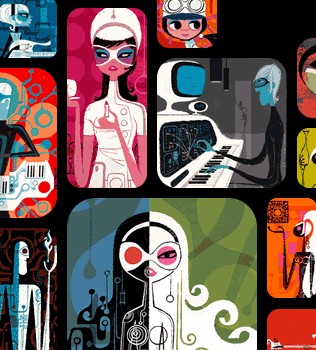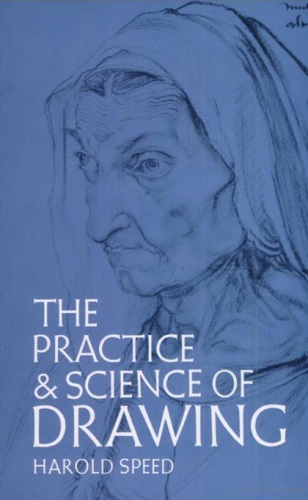I’ve added a link to a photography gallery. These are photo prints that were being sold at the last show. Contact me if you’re interested in purchasing any of them. Prints are printed on matte fine art photo paper, mounted on Mat Board sheets, and sealed in archival-quality polybags.
You can see the photographic gallery here.
Chris Reccardi art show
Cool art by Chris Reccardi of Samurai Jack and other things.
reccardi.com:cosmopollus

New Studio vs. Old Garage
I’ve finished painting the interior of the studio, and all that remains is to reorganize, get some storage solutions, and get back to making art. I’ve moved all of the junk out of the studio to an exterior shed, and what remains is what’s being used in the studio business. And a couch. There’s also a couch. Futon, actually.
For those looking for a little background, I’ve spent the last two years working on converting a detached garage into a functional art studio. There’s electricity, but no plumbing or built-in heat. Both things I plan to rectify in the coming years. Currently the studio is heated quite sufficiently with a combination of one 1500w space heater, and one catalytic propane system (which, theoretically, can be used indoors without fear of killing everyone).







I grabbed some old pictures of the garage as it used to look when I first toured the house. It was cinderblock interior, with a broken concrete floor, and full of mice.



Now to get back to some painting.
Norval Morrisseau, 75: Famed native painter
TheStar.com | Obituary | Norval Morrisseau, 75: Famed native painter
Norval Morrisseau’s death yesterday at Toronto General Hospital, at age 75 after a long and feisty battle with Parkinson’s disease, won’t end of the gritty story of the great Anishinabe painter once called “the Picasso of the north” who signed his canvases “Miskwaabik Animiki” or Copper Thunderbird.
Born and raised in isolation near Thunder Bay, Ont., a member of the Order of Canada, Morrisseau was the sole Canadian painter shown at Paris’s Georges Pompidou Centre in 1989 as part of the French celebration of the bicentennial of the French Revolution.
He “spearheaded a cultural renaissance in First Nations arts and culture in the ’60s,” Phil Fontaine, national chief of the Assembly of First Nations, said in a statement yesterday. “He taught us to be proud of who we are.”
EBSQ – Self=Representing Artists
Some very interesting articles in here. I’m actually looking for a way to organize things on my walls, and this site came up with some useful instructional entries there.
EBSQ – Info
EBSQ is an online art association whose members represent their own work to the public. Our mission is to foster an active community of independent artists, and to provide tools and services to bring our members greater exposure in the art market. EBSQ membership is open–we welcome artists at all stages of their career. All media and styles are welcome.
History
EBSQ (ee-bee-es-CUE) is derived from the name e-Basquiat and has its roots in early online tagging (like, waaay back when tags were still called “keywords.”)
The name has two-fold meaning. The early members of the group fancied Basquiat’s art (and the innovator of the term–John Seed– actually worked for Basquiat at one point). They saw themselves (rightly) as rebels outside of the gallery system, taking their art career into their own hands literally and figuratively by selling it directly to their customers via then-fledgling auction site, eBay. That “Self-Representing Artist” category you see now on eBay and other sales platforms? Yup, we did that.
And then there’s this little thing that EBSQ’ers have been doing for the past 7 years. Just as Basquiat left the tag “SAMO” all over creation with his art, we leave “EBSQ” as our calling card wherever we put our art online and off, leaving a trail back to our site and other like-minded souls.
What started as an eBay-centric artist group with our own unique keyword and a free-hosted message board back in 2000 has come a long way since then!
60 Sources of Inspiration for Photography
Interesting site to help get you inspired enough to get out and take pictures.
60 Sources of Inspiration for Photography | Make Money Selling Your Photos
Are you struggling for new ideas? Do your creative batteries feel as flat and lifeless as a skunk in the fast lane?
Here are 60 ways to breathe new life into your love of photography and re-energize your inspiration.
San Francisco Pics of Keith Haring
CARFAC Alert to Visual Artists
Library and Archives Canada is presently contacting a large number of visual artists with the goal of having them sign a contract in which they are asked to cede their copyright to the Canadian government in perpetuity.
The pretext for this is the supposed need, for a specific project, to provide Library and Archives Canada, free of charge, with the right to make certain works that are in their collections available to students, researchers and the general public. The letter asks these artists to sign the contract and to return it as soon as possible – for some, the deadline is October 8th.
WE DO NOT ADVISE YOU TO SIGN THIS CONTRACT, since it allows the federal government to strip you of what rightfully belongs to you.
In fact, by signing this contract, not only are you signing away your copyright ownership on these works to the Canadian government and even renouncing part of your moral rights, but you will receive no financial compensation.
In other words, by signing this contract, you would authorize the government to reproduce your works in any context they see fit, to exhibit them in public, or to present them on the Internet without paying you copyright royalties. In addition, by renouncing part of your moral rights, as is being requested, you would expose yourself to the possibility of seeing your works modified, distorted or mutilated, depending on the whim of a graphic designer employed by the federal government or a communications agency under contract with the government.
Another atrocious aspect of the contract, as written, is that it would permit the government, which would become legal holder of part of your rights, to authorize educational institutions to present your works in a multitude of contexts. Here again, you would not receive one cent for the use of your work!
Library and Archives Canada: One example among many
In the professional visual arts field, there are predators that do not hesitate to appropriate copyright or neglect to respect it. The money made with your copyright, or the money saved at your expense, is the result of tampering with the financial royalties that should go, by right, to creators.
These predators may be government agencies, as is the case with Library and Archives Canada, or public or private presenters, corporate purchasers, or dishonest agents. They may appeal to your generosity, or to your sense of civic duty, or they may threaten you with the loss of an exhibition or a sale.
The myth of “exposure” as justification
One of the main justifications invoked by copyright predators in making this kind of request is to claim that in exchange for your copyrights, they will distribute your works widely and that you will have more exposure, which is good for your career. Artists often sign contracts that are disadvantageous to them in the hope of gaining more visibility. You should not have to pay this price for a future career and it does nothing but harm the rights that should be respected for all artists in the visual arts community. We must act together to defend visual artists’ rights to obtain better socio-economic conditions and show solidarity in our field of practice by supporting the efforts made by our associations, CARFAC and RAAV.
The signature of such a contract negates the efforts made by CARFAC-RAAV and the copyright collectives to ensure that government agencies and public and private presenters respect artists’ copyright.
The benefits of collective copyright management
CARCC is a collective society for copyright management that was founded by CARFAC for the purpose, among others, of enabling visual artists to negotiate with presenters on your behalf. In Quebec, RAAV has similarly formed a copyright collective, SODART, which works in tandem with CARCC.
Because CARCC and SODART are familiar with copyright and act on your behalf, you don’t have to negotiate for yourself the conditions under which you give permission for your works. These collectives represent a large number of artists, and as part of a collective you are able to benefit from equitable treatment. Isolated, you may be at the mercy of abusive practices, and by joining CARCC or SODART you can be sure that your copyright will be respected.
Presenters often first ask artists to either completely or partially waive their copyrights with no financial compensation. All too often, presenters strip artists of their rights with no benefit paid, by asking them to waive their exhibition and reproduction rights in their contracts. However, when a presenter deals with a collective society, permissions for presentation of the works are clearly given under conditions that are much more equitable for artists. In fact, rather than surrendering your rights, a collective society negotiates a user licence that it writes to be adapted to a specific project, under respectful conditions, and in return for payment of royalties.
Along with your art, your copyright is among your most valuable assets
Some of the best sources of income that visual artists have are the sale or rental of their works and their copyright, which, during their lifetime (and their estate, up to fifty years after their death), enables them to collect royalties for the presentation of their artworks. This is a not inconsiderable value, and that is why it is important to protect not only your works but the copyright that is attached to them.
Unless you are a copyright specialist, know the law, and are a very experienced negotiator, wheeling and dealing with your copyright exposes you to many risks, loss of income, and the anxiety and tension that often accompanies this type of transaction.
Entrusting management of your rights to a collective society is thus your best option, and CARCC and SODART were created to enable you to benefit from what, by all rights, is coming to you. CARCC and SODART can offer you the peace of mind that you need to pursue your creative work. Joining a collective also gives you a means of acting collectively against copyright predators. This is worth serious thought.
What to do with the Library and Archives Canada contract
If you have not yet joined CARCC or SODART, thereby allowing them the ability to handle this situation on your behalf, inform the person who sent you the letter and contract that you want more time to think about the agreement. Above all, it is important not to cede your rights without fair financial compensation. As for the moral rights that are attached to all of your works, it is important not to waive them, because you might see your work cropped, improperly manipulated, or used without your consent to convey messages that you may not agree with.
In solidarity,
April Britski
Executive Director
CARFAC
Christian Bédard
Executive Director
RAAV
For more information, contact:
CARFAC: carfac@carfac.ca, toll-free: 1.866.344.6161
RAAV: christian.bedard@raav.org, 1.514.866.7101
CARCC: carcc@carcc.ca, toll-free: 1.866.502.2722
SODART: sodart@sodart.org, toll-free: 1.866.906.0230
CARFAC Ontario – http://www.carfacontario.ca – is a professional association for visual and media artists. Founded in 1968, CARFAC (Canadian Artists’ Representation/le Front des artistes canadiens) has worked for nearly forty years on the legal and economic issues facing artists. We believe that artists, like professionals in other fields, should be paid for their work and share equitably in profits from their art practice. CARFAC Ontario works to promote the welfare and rights of artists by developing services for individuals and informing policy debate to work towards a culture that supports artists. Our services, programs and publications are created by artists for artists and provide the necessary tools to help them effectively achieve their professional goals.
Teacher fired for buttocks art sues
More on the Stephen Murmer case.
Teacher fired for buttocks art sues – Peculiar Postings – MSNBC.com
A high school art teacher fired after officials learned he moonlighted by creating paintings using his bare buttocks and other body parts sued his former employers on Thursday.
Stephen Murmer was fired in January after Chesterfield County Public Schools officials saw a YouTube video of Murmer wearing a swim thong and a Groucho Marx mask, demonstrating how he applies paint to his backside, then presses it onto a canvas.
The lawsuit, filed in U.S. District Court in Richmond by the American Civil Liberties Union, said Murmer’s firing violates his First Amendment rights. It also alleges that after he was suspended from teaching in December, school officials ordered him not to discuss his suspension even as they commented on it in news interviews.
The Best Figure Drawing Books Ever

Process Junkie: The Best Figure Drawing Books Ever
A collection of figure drawing, sketching and anatomy books for fellow artists and student friends. You can download any and all of these books for free.



